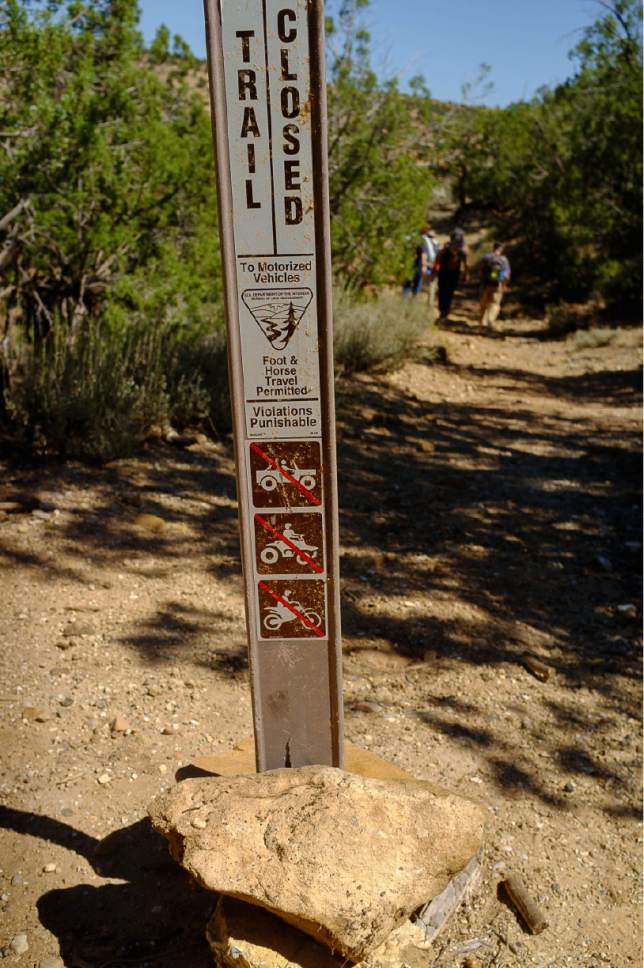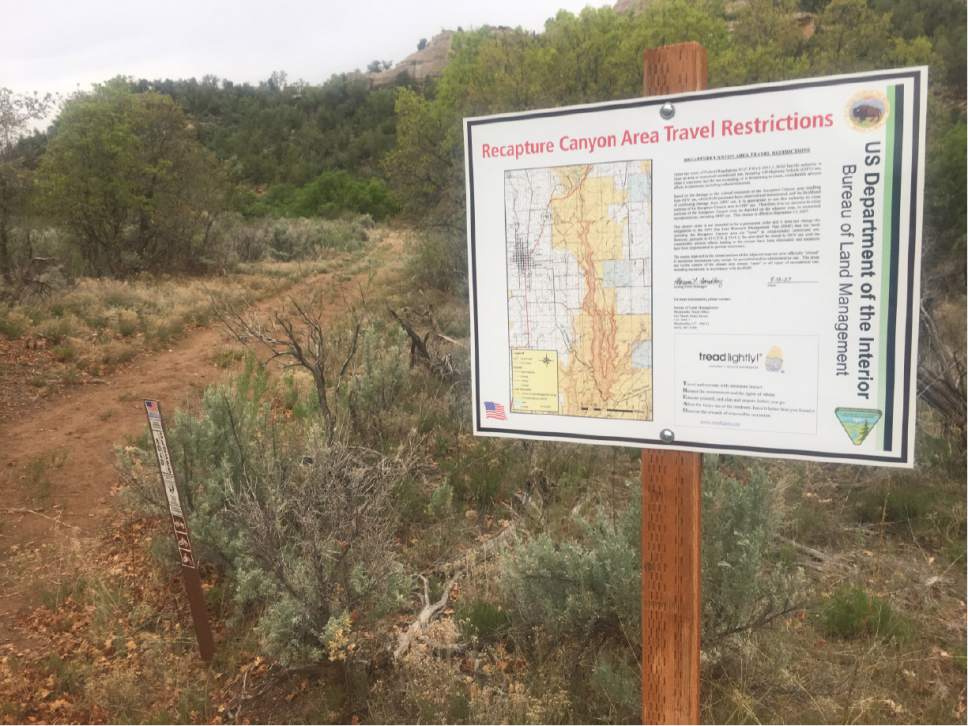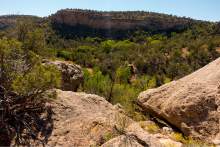This is an archived article that was published on sltrib.com in 2017, and information in the article may be outdated. It is provided only for personal research purposes and may not be reprinted.
Blanding • Blanding • The state of Utah is appealing the U.S. Bureau of Land Management's latest decision regarding motorized access to San Juan County's Recapture Canyon.
The Interior Department had hailed the April 9 decision as a victory for motorized access, saying it was lifting a 10-year-old ban on riding around and in the canyon east of Blanding.
But state officials don't see it that way and filed papers Monday with the Interior Board of Land Appeals to challenge the rejection of a right of way through the canyon.
Before the recent Bears Ears National Monument designation, Recapture was the land-use battle at the center of the state's attention. The BLM's 2007 decision to close the canyon and its failure to process San Juan County's right-of-way application were seen either as a laudable attempt to preserve cultural resources or an extreme example of "federal overreach," incompetence and lawlessness.
Interior Secretary Ryan Zinke last month announced a decision to authorize a 6.8-mile motorized trail network on the canyon rim.
"Allowing ATVs and other vehicles in Recapture Canyon will open up opportunities for people to enjoy our public lands while still protecting the cultural and natural resources that make the place special," Zinke said in a news statement. "On my first day in office I prioritized public lands access."
The BLM decision in April was widely misreported as a reopening of the canyon itself. Some characterized it as a vindication of county Commissioner Phil Lyman, who was convicted of organizing an illegal ATV ride through the canyon three years ago.
Yet this week, the canyon bottom remains closed a decade after the BLM barred ATVs when officials discovered that people's use of an authorized trail had damaged some archaeological sites. Ancestral Puebloans inhabited the canyon hundreds of years ago. While their dwellings and granaries are still intact in the canyon walls, less apparent are middens, graves, cisterns and hearths on the canyon floor.
Brian Maffly covers public lands for The Salt Lake Tribune. Maffly can be reached at bmaffly@sltrib.com or 801-257-8713.
Twitter: @brianmaffly









